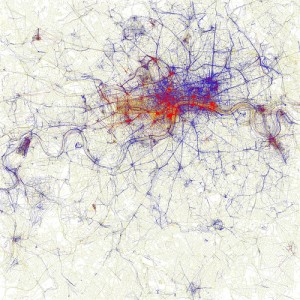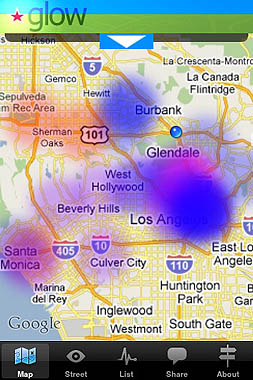Archive
Are Authentication and Customer Service Mutually Exclusive?
Confirming one’s identity to a customer service agent on the phone is never easy. Banks, wireless providers, healthcare and insurance companies come to mind as some of the most demanding – in the number of authentication requirements to validate you as their customer. Before a customer can even get to the issue at hand – let alone solve it – he/she must wade through a myriad of challenge questions, phone numbers, account numbers and nicknames, and that’s just the warm up. Still to come, are recollections of one’s last payment amount and the list goes on.
 You’ve made it clear that you don’t want me as a customer – I can take a hint
You’ve made it clear that you don’t want me as a customer – I can take a hint
Not to demean the toll this takes on the customer; serving the customer can wither the inspiration of a call center agent, too – no matter how passionate he/she is.
How truly difficult is it to authenticate a customer to avoid compromising said customer’s own privacy and security? How many times have you heard that you are being authenticated for the tenth time merely for “your” security? Is it really for your security? Or…
Banking
Having worked as an authentication product consultant in one of our nations’ largest banks, I learned that the incidence of fraud – of the likes we are speaking – is very small relative to other components of the risk management portfolio. Banks are looking to protect themselves from fraud at least as much or moreso than to prevent you from being inconvenienced (unable to use their service). But banks are not alone.
Mobile carrier
While purchasing a new smart phone recently, I actually had to leave the store to ‘fax the wireless provider my driver’s license’. Hadn’t I just shown them my drivers’ license in person? Yes. Was that enough? No. What value would a printed paper in a fax queue provide that a human looking at my matching photo did not provide? Yes, it didn’t make sense to me either, so I left.
Making it Work Online
The fact is that two-factor authentication has been used for verifying identity for online transactions for at least 15 years and continues to improve the authentication process today. An example of two factor might be: a laptop login accompanied by proof via another channel: voice, text message, biometrics (thumbprint, etc.), or one-time password such as an RSA card.
In my own personal experience living in Switzerland as early as 1996 I began receiving a scratch list of numbers from my bank, UBS, and used them along with my username and password to login to my online banking system. That’s two factor – online credentials and scratchlist. It would be a better choice and better experience for companies to use the latest in two factor authentication today: the mobile device. Some companies are already doing this in areas such as mobile banking.
Today, the mobile phone can serve as a second channel of authentication for transactions. Wouldn’t it be a better experience to read a number from your mobile device and enter it on a website than to buy a new print cartridge for your fax machine? For a better choice in customer service and overall experience interacting with your favorite service providers, why not suggest they offer mobile phone authentication to better serve their customers? They’ll be making a better choice for their customers if they do.
giffgaff – The UK Telco Gets SocialCRM Better than Most: Globetrotting SocialCRM
Globetrotting to Europe, now, where mobile phones became prolific far before they made it to the US – let’s look to the UK, the birthplace of SMS / texting! With that level of innovation, it shouldn’t be such a surprise, then, that innovation drives the UK company: giffgaff.
“The quintessential SocialCRM story and poster child in Europe is giffgaff.com, a UK mobile service provider that keeps prices low by supplying only a SIM chip to its customers, and then crowdsourcing the support,” according to Mark Tamis, a SocialCRM guru based in Paris.
Giffgaff is an MVNO (mobile virtual network operator) operating across the O2 network. What that means, essentially, is that the operation of the mobile network is not a differentiator for the company, so they look to the customer experience playing a larger role in what makes their service and the brand: giffgaff and the tagline “The mobile network run by You.”
Further to Mark’s comments, he shared that giffgaff has won a 2010 B2C International Groundswell Award (awards in honor of Josh Bernoff and Charlene LI’s book on social growth “Groundswell”) for embracing the customer.
According to giffgaff founder Vincent Boon: “what really sets giffgaff apart is the fact that it really has no call center and all customer service (except for billing queries) is done by the online community. Active community members get rewarded for running parts of the business including answering questions in the community (majority within 5 minutes), attracting new members or helping to promote the company.”
Mr. Tamis also shared further innovative marketing by giffgaff: “They have social commerce by allowing customers to accumulate phone minutes and “goodies” when they onboard others from their social network.” A novel concept, indeed! This proves that an innovation in SocialCRM may lie not only in the service one provides, but also in the way the community is rewarded for its participation.
Vincent Boon built an online forum to find out what people really wanted before he started giffgaff. That input led directly to the creation of giffgaff, its community-led innovation, packages, offerings, pricing and more. It doesn’t get much more customer centric than that!
What I Know About Customers I Learned from a Kangaroo or “Competitive Advantage through Caring”
After several conversations with Marketing Science Professor Kalyan Raman, of Northwestern University’s Kellogg School of Management, it became more apparent that as we strive to exceed our customers’ expectations and address some of our burning business themes – “Customer 360”, ”Customer Experience” or ”Customer Support” – we often overlook caring, which truly is this business unifier.
In his words:“Caring is a differentiator—done well, it sets a company apart from its rivals; Caring is unifying—it unites the organization through a shared vision.”
From what I know of Professor Raman’s work in Integrated Marketing and Communications (and he is specialized in computational advertising and allocation modeling) he applies evidence-based approaches to decision making, and requires students to take real world projects with real data to model, analyze and then create information. He has proven that this approach can be applied to most any problem, which may be the reason that he’s been involved in solving problems in disciplines as far afield as the medical profession.
But back to the theme of Caring in business practice, how do we know when we’re doing it right – and how can we find the ROI within customer insights and truly affect the bottom line?
Raman says “Caring opens a new way of looking at business practices, because today’s customers – socially outfitted in the driver’s seat – are equipped and prepared to challenge conventional or traditional marketing tactics. Social customers have become suspicious of marketing devices developed in times that were entirely different from those of today.”
“Caring is central to connecting with customers and earning their loyalty. We all understand caring intuitively – and paradoxically – that can get in the way of being truly caring. Caring is a subtle and elusive concept because it means different things to different people, it is culturally determined, socially influenced and dynamic because it’s meaning changes over time even for the same person. Caring is influenced by the organizational structure and therefore visionary leadership is a key element in caring.”
On November 9th, SAP holds a Chicago-based customer event where we here at SAP will have the pleasure of inviting Prof. Kalyan Raman – to continue this dialogue amongst our customers. He’ll share how a new scientific understanding of Caring can be harnessed to improve the process of connecting with customers, engaging them, improving customer satisfaction and dramatically increasing profitability.
From the Ridiculous to the Sublime: Cracking the Code on Sentiment Analysis
Sense making: we do it all the time in our daily lives and in professional decision-taking. We observe, we synthesize, draw upon our experience, and blend in a few data sets.
And, voilà! We arrive at our own conclusions – possibly significantly different than another colleague observing and analyzing from his/her own perspective.
So what’s the skinny on sentiment analysis as pertains to our online world? [a world where a social site: Facebook receives more visitors in the USA than web search giant: Google]
If you read blogger ArnoldIT’s post last month on Marco Arment’s (former lead developer at Tumblr) blog about gauging the worth of an ‘appstore’ product: “Sentiment Analysis is quick and dirty.”
Positives are posts which most often include: awesome, worth, thanks, amazing, simple, perfect, price, everything, ever, must, iPod, before, found, store, never, recommend, done, take, always, touch
Negatives are posts which include: waste, money, crashes, tried, useless, nothing, paid, open, deleted, downloaded, didn’t, says, stupid, anything, actually, account, bought, apple, already
What other points of view are there out there? For example, what is sentiment analysis when consumed on a mobile device? Well, it could be an mobile app called Glow. Glow is an iPhone app that maps user emotion, displaying group sentiment through color. Glow provides the ability to view how people in your current surroundings feel – blue color represents a “good feeling” while red shows “not feeling good” areas on your local or global map.
Santa Monica? Humbug. LA? Whooping it up! And a bit more far-fetched, but also available, is Glow’s “emotional terminator vision”: when paired with Street view, Glow uses your camera as a window that lets you see how people are feeling around you by mixing reality with Glow for a sentiment heat map over streets, houses and buildings.
What about in the business context; for lines-of-business directors who are looking to derive meaning from the gigantic fire hose of social data (that we know includes our companies, products and brands)? A representative from Radian6, a social media monitoring software vendor shared this view: “There is no sentiment analysis which is perfect due to the limitations of our current computing capabilities.” Although, I’d argue, Radian6, in the meantime, is doing as good a job as anyone.
So where does it leave the rest of us? We’re still reaching for new ways to gain a better understanding of our customers. TheSocialCustomer.com’s upcoming webinar; will do just that. Brent Leary and a panel of speakers convene October 19th, 2010 to discuss Sentiment Analysis for Customer Service – its challenges and new advances – to make sense of it all.




